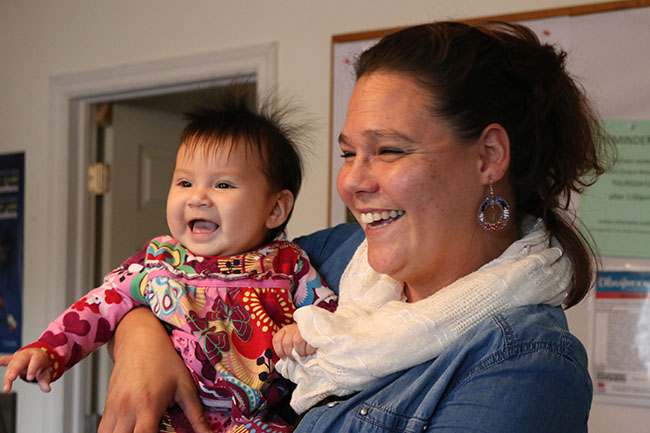Anishinabek Nation Child Well-Being Law projected to be in effect April 1, 2017

WASAUKSING FIRST NATION – The Child Welfare working group is preparing for presentations on November 18 as well as in the First Nations to explain the Anishinabek Nation Child Well-Being Law to citizens.
“This good work is so important,” says Chief Warren Tabobundung of Wasauksing of the Child Welfare body that has yet to be named. “We have to do this work outside of those agencies. It has to be Anishnaabe-driven. He commends everyone who is doing this work that is really tough work. Our staff here in Wasauksing – it’s tough – I commend them for the work they do. Our children are priority number one.”
Union of Ontario Indians Social Services Director Adrienne Pelletier says that ratification will take place in 2016 since the Law is projected to be in affect April 1, 2017.
“First Nation communities have the ability and the expertise to take back responsibility for protecting their children,” says Pelletier. “The centre of an Anishinabek Nation Child Well-Being Law is protecting the spirit of the child and supporting our families to provide safe, nurturing homes for their children.”
The Anishinabek Nation will be negotiating a framework agreement with Ontario through the Ministry of Children and Youth Services.
“These are exciting times for First Nations,” says Pelletier. “To exercise our authority when it comes to our children and youth – to keep them in the community and primarily in customary care for those who require temporary care arrangements.”
“We will be seeking a ratification resolution at the Union of Ontario Indians Grand Council fall assembly to support the ratification work,” says Pelletier. “We will have a full-day Child Well-Being Law session on November 18 at the Sault Ste. Marie Delta Waterfront Hotel.


